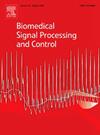Subject-adaptive SSVEP decoding based on time–frequency information
IF 4.9
2区 医学
Q1 ENGINEERING, BIOMEDICAL
引用次数: 0
Abstract
Steady-State Visual Evoked Potential (SSVEP) based Brain–Computer Interface (BCI) has been widely used. While unsupervised methods like Filter Bank Canonical Correlation Analysis (FBCCA) perform well in long time windows, it performances significantly declines in short time windows. Supervised methods such as Task Related Component Analysis (TRCA), on the other hand, perform well in short time windows but exhibit weak under cross-subject generalization. To address these issues, this paper introduces the self-attention mechanism from the Transformer into the SSVEP decoding task to enhance the model’s cross-subject adaptability. To learn individualized SSVEP features, this method fully leverages the spatiotemporal, frequency, and phase information in EEG, using segment embedding and position embedding to differentiate these features. Additionally, a token as additional channel information is incorporated to gather other channels’ information for classification. The proposed approach achieved promising results on two commonly used public SSVEP datasets, demonstrating better performance in short time windows and cross-subject conditions compared to traditional unsupervised and supervised models, as well as supervised deep learning models.
基于时频信息的主体自适应SSVEP解码
基于稳态视觉诱发电位(SSVEP)的脑机接口(BCI)得到了广泛的应用。虽然无监督方法,如滤波器组典型相关分析(FBCCA)在长时间窗口表现良好,但在短时间窗口表现明显下降。另一方面,任务相关成分分析(Task Related Component Analysis, TRCA)等监督方法在短时间窗口下表现良好,但在跨主题泛化下表现较弱。为了解决这些问题,本文在SSVEP解码任务中引入了Transformer的自注意机制,以增强模型的跨主题适应性。为了学习个性化的SSVEP特征,该方法充分利用脑电的时空、频率和相位信息,采用分段嵌入和位置嵌入对这些特征进行区分。此外,作为附加通道信息的令牌被合并,以收集其他通道的信息进行分类。该方法在两个常用的公共SSVEP数据集上取得了令人满意的结果,与传统的无监督和有监督模型以及有监督深度学习模型相比,在短时间窗口和跨学科条件下表现出更好的性能。
本文章由计算机程序翻译,如有差异,请以英文原文为准。
求助全文
约1分钟内获得全文
求助全文
来源期刊

Biomedical Signal Processing and Control
工程技术-工程:生物医学
CiteScore
9.80
自引率
13.70%
发文量
822
审稿时长
4 months
期刊介绍:
Biomedical Signal Processing and Control aims to provide a cross-disciplinary international forum for the interchange of information on research in the measurement and analysis of signals and images in clinical medicine and the biological sciences. Emphasis is placed on contributions dealing with the practical, applications-led research on the use of methods and devices in clinical diagnosis, patient monitoring and management.
Biomedical Signal Processing and Control reflects the main areas in which these methods are being used and developed at the interface of both engineering and clinical science. The scope of the journal is defined to include relevant review papers, technical notes, short communications and letters. Tutorial papers and special issues will also be published.
 求助内容:
求助内容: 应助结果提醒方式:
应助结果提醒方式:


